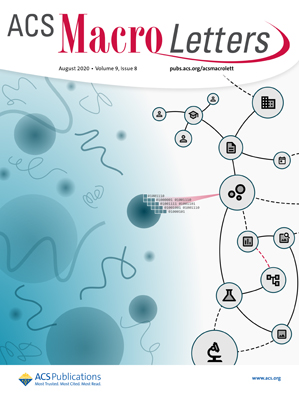High Radiation-Resistant Elastomer via Constructing Radiation-Stable Macromolecular Network
IF 5.1
Q1 POLYMER SCIENCE
引用次数: 0
Abstract
The high-energy radiation in nuclear energy, space missions, and other radiation-related fields would accelerate the deterioration of polymers, greatly reducing their service life and reliability. Here, a new concept of radiation resistance has been proposed, which is to reduce the effect of radiation degradation on polymer properties by constructing a radiation-stable macromolecular network. Concretely, this strategy was achieved by introducing a stable coordination interaction between macromolecules, and radiation-resistant elastomers (PG-Zn) were prepared. In radiated PG-Zn, the intermolecular coordination interaction could maintain the chain network well, even though its main chain has undergone a chain-breaking reaction. Therefore, after 300 kGy irradiation, PG-Zn still maintained nearly 18 MPa strength and 650% elongation at break, and its tensile deformation hysteresis rate was almost unchanged. The PG-Zn could be further modified, and the modified elastomer retains more than 80% of its mechanical properties after 300 kGy radiation, which is the most radiation-resistant elastomer reported to date. In addition, the design has good scalability and could be used to prepare radiation-resistant sensors, showing more than three times the service life of the ordinary group under irradiation. This radiation-resistant design presented a novel and promising approach for solving the radiation-aging problem of polymers.

构建辐射稳定大分子网络制备高抗辐射弹性体
核能、太空任务和其他与辐射相关领域的高能辐射会加速聚合物的劣化,大大降低其使用寿命和可靠性。本文提出了一个抗辐射的新概念,即通过构建一个辐射稳定的大分子网络来降低辐射降解对聚合物性能的影响。具体而言,该策略是通过引入大分子间稳定的配位相互作用来实现的,并制备了抗辐射弹性体(PG-Zn)。在辐射PG-Zn中,虽然主链发生了断链反应,但分子间配位相互作用仍能很好地维持其链网。因此,经过300 kGy辐照后,PG-Zn的强度仍保持在近18 MPa,断裂伸长率仍保持在650%左右,拉伸变形迟滞率基本不变。PG-Zn可以进一步改性,改性后的弹性体在300 kGy的辐射下仍能保持80%以上的机械性能,是迄今为止报道的最耐辐射的弹性体。此外,该设计具有良好的可扩展性,可用于制备抗辐射传感器,在辐照下的使用寿命是普通组的三倍以上。这种抗辐射设计为解决聚合物的辐射老化问题提供了一种新颖而有前途的方法。
本文章由计算机程序翻译,如有差异,请以英文原文为准。
求助全文
约1分钟内获得全文
求助全文
来源期刊
CiteScore
10.40
自引率
3.40%
发文量
209
审稿时长
1 months
期刊介绍:
ACS Macro Letters publishes research in all areas of contemporary soft matter science in which macromolecules play a key role, including nanotechnology, self-assembly, supramolecular chemistry, biomaterials, energy generation and storage, and renewable/sustainable materials. Submissions to ACS Macro Letters should justify clearly the rapid disclosure of the key elements of the study. The scope of the journal includes high-impact research of broad interest in all areas of polymer science and engineering, including cross-disciplinary research that interfaces with polymer science.
With the launch of ACS Macro Letters, all Communications that were formerly published in Macromolecules and Biomacromolecules will be published as Letters in ACS Macro Letters.

 求助内容:
求助内容: 应助结果提醒方式:
应助结果提醒方式:


